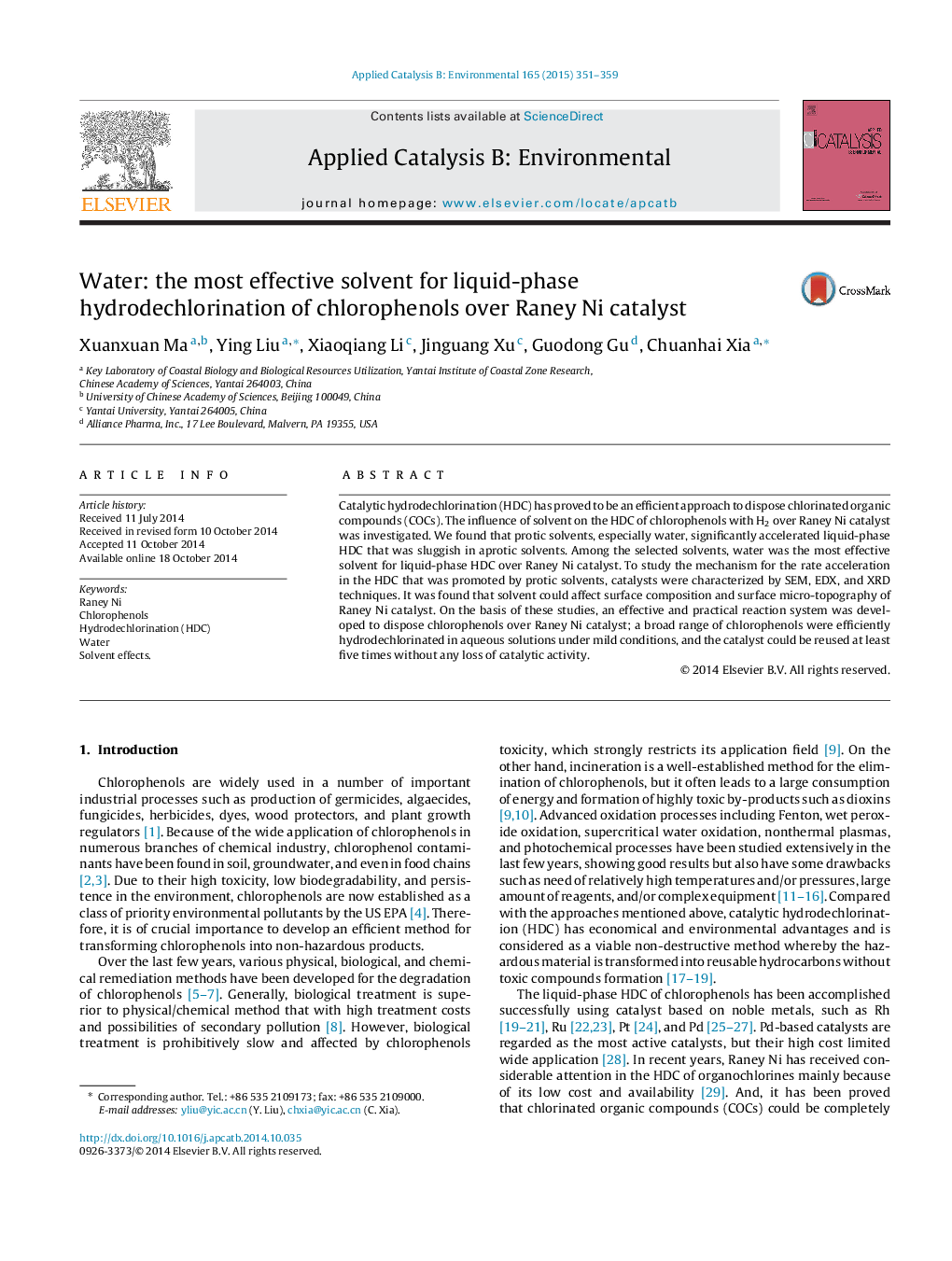| کد مقاله | کد نشریه | سال انتشار | مقاله انگلیسی | نسخه تمام متن |
|---|---|---|---|---|
| 45565 | 46416 | 2015 | 9 صفحه PDF | دانلود رایگان |

• Water is the most effective solvent for HDC of chlorophenols over Raney Ni catalyst.
• SEM, EDX, and XRD are introduced to study the influence of solvent on the catalyst.
• The accumulation of NaCl causes the deactivation of the catalyst in organic solvent.
• Surface micro-topography of the catalyst could be influenced by the solvent in HDC.
Catalytic hydrodechlorination (HDC) has proved to be an efficient approach to dispose chlorinated organic compounds (COCs). The influence of solvent on the HDC of chlorophenols with H2 over Raney Ni catalyst was investigated. We found that protic solvents, especially water, significantly accelerated liquid-phase HDC that was sluggish in aprotic solvents. Among the selected solvents, water was the most effective solvent for liquid-phase HDC over Raney Ni catalyst. To study the mechanism for the rate acceleration in the HDC that was promoted by protic solvents, catalysts were characterized by SEM, EDX, and XRD techniques. It was found that solvent could affect surface composition and surface micro-topography of Raney Ni catalyst. On the basis of these studies, an effective and practical reaction system was developed to dispose chlorophenols over Raney Ni catalyst; a broad range of chlorophenols were efficiently hydrodechlorinated in aqueous solutions under mild conditions, and the catalyst could be reused at least five times without any loss of catalytic activity.
Figure optionsDownload as PowerPoint slide
Journal: Applied Catalysis B: Environmental - Volume 165, April 2015, Pages 351–359